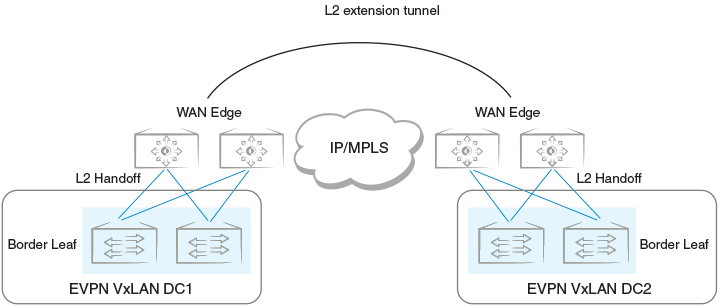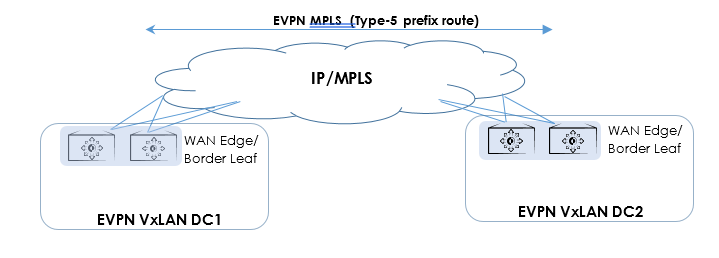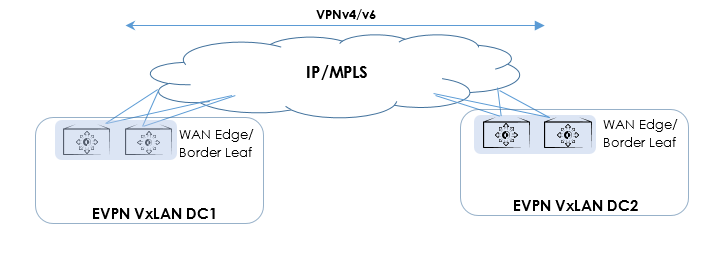BGP EVPN VXLAN data center interconnect
This section details the BGP EVPN VXLAN support for data center interconnect (DCI).
Data center Layer 2 interconnect between EVPN VXLAN and EVPN MPLS or VPLS is not supported. However, EVPN VXLAN and VPLS can coexist on the router, although a given VLAN/BD should not be extended into EVPN and be configured for VPLS.
The following sections address a variety of DCI interconnect scenarios.
Layer 2 and Layer 3 control-plane extension
In this scenario, VXLAN tunnels are extended by means of a border leaf instead of getting terminated. This extension is primarily the spine functionality being provided by the border leaf, except that the control and forwarding planes are extended over the WAN/core in the case of a border leaf.Layer 2 handoff

Layer 3 handoff

EVPN Layer 3 interconnect
In this scenario, EVPN VXLAN tunnels within the data center are terminated on the WAN edge, as shown in the following figure. In the BGP EVPN control plane, only Type-5 prefix routes are imported from EVPN VXLAN peers and are reoriginated towards EVPN MPLS peers. Similarly, in the other direction, EVPN Type-5 prefix routes are imported from EVPN MPLS peers and are reoriginated towards EVPN VXLAN peers within the data center.
EVPN VPNv4/v6 interconnect
In this scenario, EVPN Type-5 prefix routes from the VXLAN data center are terminated on the WAN-edge device, and are redistributed into VPNv4/v6 address-family, as shown in the following figure. Similarly, IPv4/v6 prefix routes imported into VRFs from VPNv4/v6 are exported into EVPN and are advertised to EVPN VXLAN peers by means of Type-5 prefix routes.


